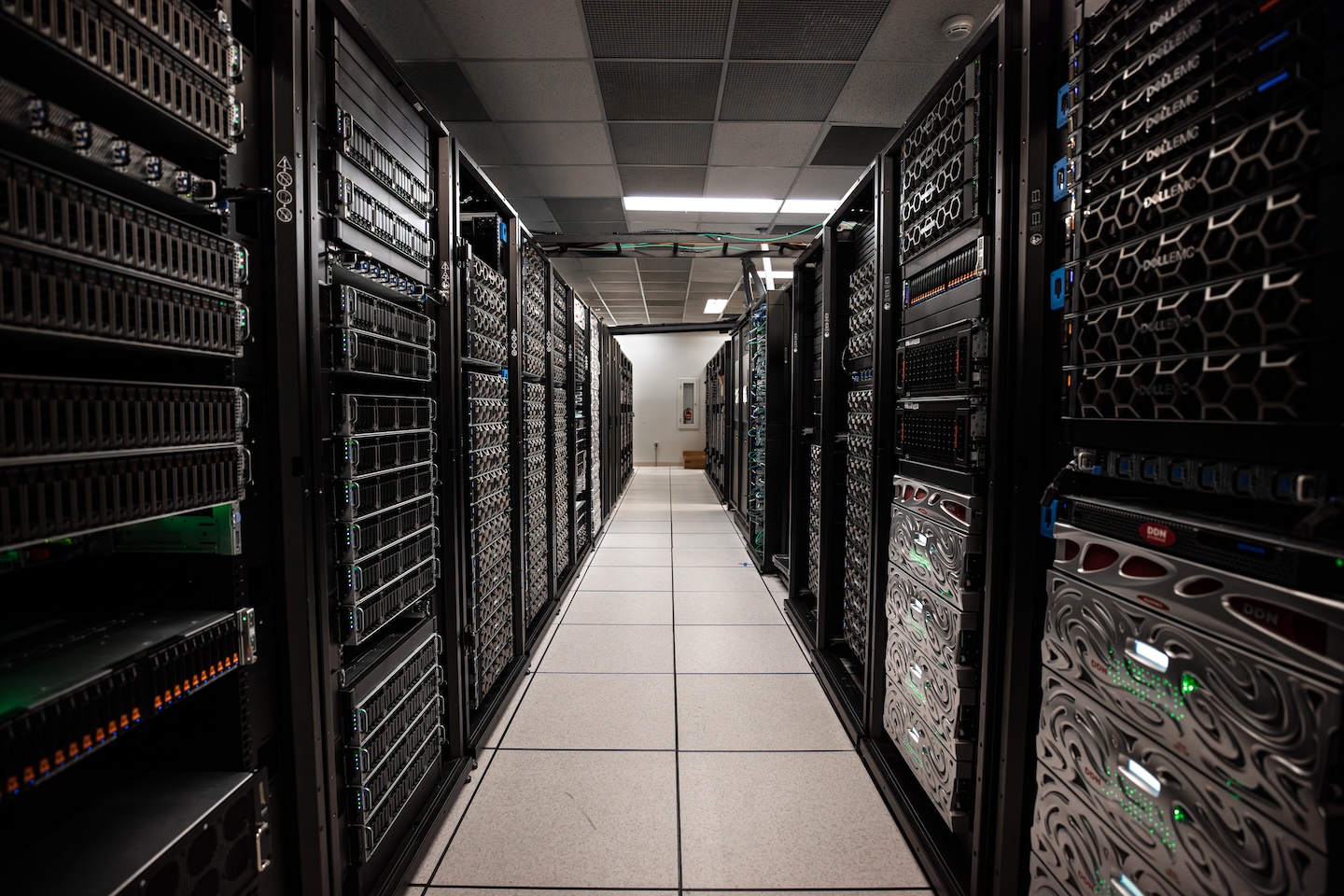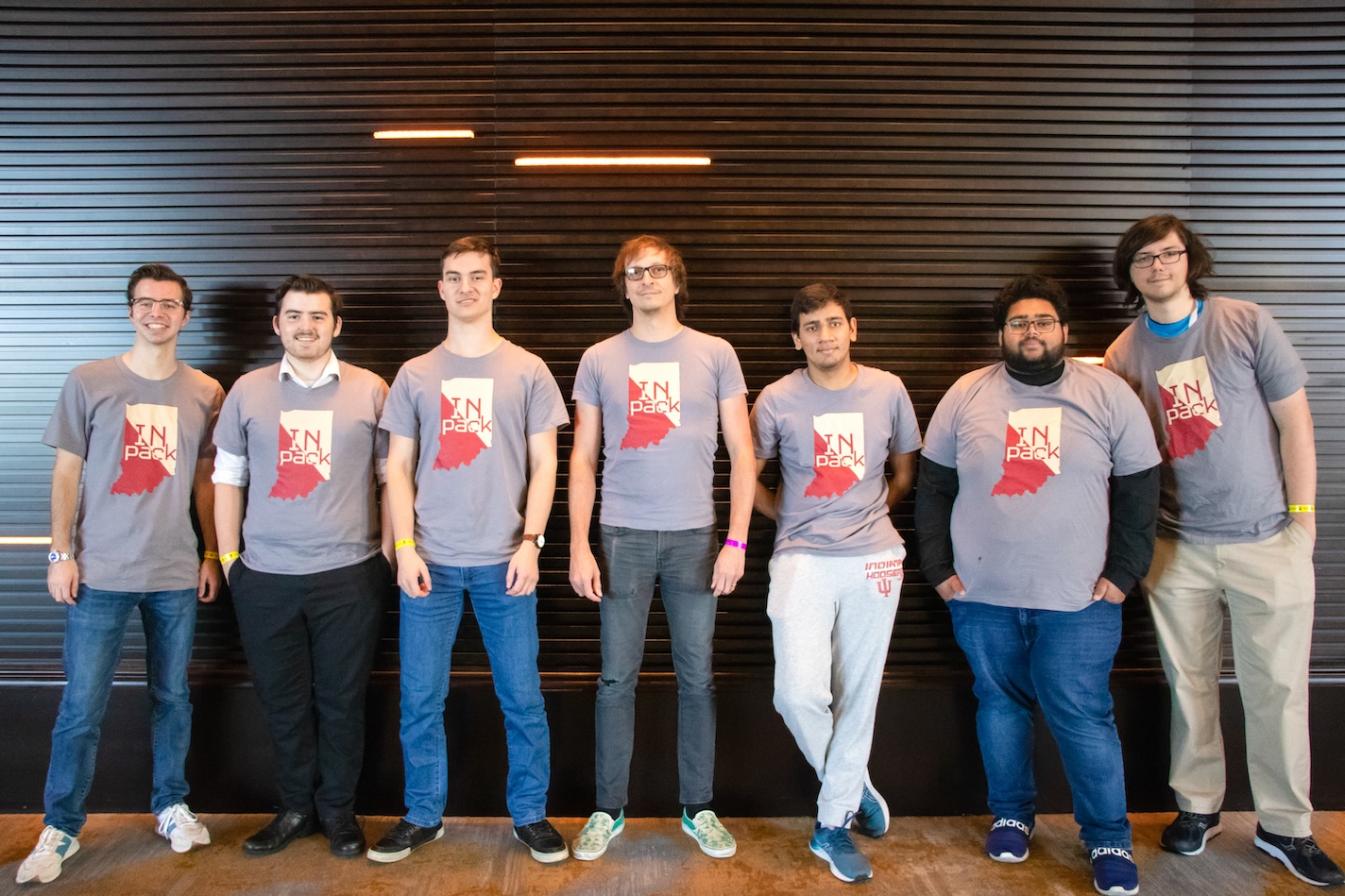Competitors on the court, colleagues in computing
High-performance computing (HPC) is booming in the state of Indiana. Two of the nation’s top National Science Foundation (NSF)-funded supercomputers reside on campuses within the state: Purdue University’s Anvil supercomputer, located in West Lafayette, and Indiana University’s (IU) Jetstream2 system, on the main campus in Bloomington.

While the two universities may be rivals on the basketball court, in the world of HPC, they play together well. Anvil, Purdue’s most powerful supercomputer, provides advanced computing capabilities to support all sorts of research. IU’s Jetstream2, a cloud-based, on-demand system, makes cutting-edge high-performance computing accessible to researchers, regardless of a project’s scale. The NSF’s Advanced Computing Systems & Services: Adapting to the Rapid Evolution of Science and Engineering Research (ACSS) program awarded the grants to both schools, helping elevate the state as a leader for HPC resources while enabling scientific discoveries and innovation throughout the nation and the world.
What is HPC?
High-performance computing (HPC) refers  to the use of powerful computers and advanced software tools to perform complex calculations and simulations that would be difficult or impossible using conventional computing resources. Having these resources within the state adds tremendous value for universities and researchers, as well as for private industry partners.
to the use of powerful computers and advanced software tools to perform complex calculations and simulations that would be difficult or impossible using conventional computing resources. Having these resources within the state adds tremendous value for universities and researchers, as well as for private industry partners.
HPC is most often associated with scientific research and engineering, but its uses are applicable across industries including business, finance, and healthcare. These sectors turn to HPC for reasons including:
-Improved speed and efficiency: Calculations and simulations are performed much faster with HPC than on a regular desktop computer or laptop, resulting in quicker task completion, more informed decisions, and savings of time and money.
-Ability to handle large datasets: HPC can process and analyze large amounts of data more easily than conventional computers, which is vital in many fields, including data analytics, machine learning, and artificial intelligence.
-Flexibility and scalability: Users can scale to much larger problem sizes and configurations when running on HPC. HPC resources now also include purpose-built accelerator technologies such as GPUs for modern compute-intensive workloads.
HPC offers significant benefits for a wide range of applications and is a valuable tool for those who want to spend less time waiting and more time doing.
HPC in the real world
Since coming online, Anvil and Jetstream2 have each racked up a substantial list of successful use cases, including:
-Covid-19 Pandemic Response: A research group from the University of Virginia (UVA) utilized Purdue’s Anvil supercomputing cluster to help provide COVID-19 scenario modeling for local, state, federal, and university officials and departments. The team used computer models to predict what might happen with the virus, such as how it might spread, how many people could get sick and need to go to the hospital, and how vaccines might help over time. The computational power of Anvil was used to run these scenario models, which produced data that helped drive pandemic response efforts in real-time at varying levels of government.
-Environmental Data workshop: A Haskell Indian Nations University workshop used Jetstream2 to power Jupyter notebooks, provided via CyVerse‘s Cloud Automation and Continuous Analysis Orchestration (CACAO) platform. Using Jetstream2, staff from the Environmental Data Science Innovation and Inclusion Lab (ESIIL) provided a space for workshop leaders to teach applications of LiDAR, which uses light to measure distances to Earth, and for data scientists to work in a specialized software environment for climate and geospatial data.
-Batteries of the Future: The Anvil supercomputer was utilized by a team from Yale University’s Energy Sciences Institute to research potential materials for batteries of the future. The goal of their project was to understand how heterostructures of two-dimensional nanomaterials could influence the phase transition caused by lithium intercalation, and whether this process could be controlled. The team used Anvil to run ab initio quantum-mechanical calculations in order to learn precisely where the charge from the lithium goes and how much lithium is required to initiate the phase transition. Researchers can then use this knowledge to determine what combinations of heterostructures would work best for energy storage and how to optimize their construction, potentially leading to the creation of more stable and longer-lasting batteries.
-Global flood warning system: Jetstream2 played a critical role in a global flood warning system created as part of a project led by the University of Alabama at Huntsville. The Cyberinfrastructure Integration Research Center (CIRC) in the Pervasive Technology Institute (PTI) at Indiana University used Jetstream2 to support the Model of Models (MoM), which tabulates multiple data sources to predict if a weather event will be hazardous and helps communities plan for flooding, rather than simply reacting. The information gathered by the MoM is translated into a severity score and used to alert emergency management and humanitarian organizations worldwide.
Thousands of researchers have used Anvil and Jetstream2 to explore and expand the boundaries of science. To see more use cases, please visit the **Anvil Scientific Highlights **page, as well as the Jetstream2 page.
From rivalry to partnership
It’s not always easy to find common ground  between Hoosiers and Boilermakers, but recently, the schools worked together to advance the next generation of the cyberinfrastructure workforce.
A joint Purdue-IU team competed at the Student Cluster Competition (SCC) at SC22, an international supercomputing conference that took place in Dallas, Tex. from Nov. 13 to 18. The SCC challenges student teams to build their own mini-supercomputer and use it to accomplish real science during the 48-hour competition, all while staying under a specified power limit.
between Hoosiers and Boilermakers, but recently, the schools worked together to advance the next generation of the cyberinfrastructure workforce.
A joint Purdue-IU team competed at the Student Cluster Competition (SCC) at SC22, an international supercomputing conference that took place in Dallas, Tex. from Nov. 13 to 18. The SCC challenges student teams to build their own mini-supercomputer and use it to accomplish real science during the 48-hour competition, all while staying under a specified power limit.
The team—named “INpack”—was comprised of three Purdue students and three IU students, all undergraduates. The team members coordinated virtually before the start of the competition, systematically dividing tasks as they saw fit. The Purdue members “practiced” and accomplished tasks using Anvil, while the IU students did the same on Jetsream2. Once in Dallas, they merged together seamlessly into one functioning unit. Overall, the INpack team performed well, proving that when it comes to high-performance computing, Purdue and IU can work together for the common good.
Industry Partnerships
HPC is benefiting the lives and businesses of Hoosiers throughout the state. And while Anvil and Jetstream2 were built in pursuit of scientific discovery, both are available for industry partnership. Commercial HPC resources are available, but the two NSF-funded supercomputers housed in Indiana offer attractive price structures to businesses looking to harness the power of HPC for themselves.
If you would like to learn more about how HPC can help your business, please contact:
Paul Branham, Industry Business Development Director for RCAC: [pbranham@purdue.edu]
Jetstream2 contact form: [https://jetstream-cloud.org/contact/index.html]
More information about Anvil is available on Purdue’s Anvil website. Anyone with questions should contact anvil@purdue.edu. Anvil is funded under NSF award No. 2005632.
For more information about Jetstream2, visit IU’s Jetstream2 website or contact the Jetstream2 team. Jetstream 2 is funded under NSF award number 2005506.
Written by: Jonathan Poole, poole43@purdue.edu
